LeetCode 刷题笔记---(六)
LeetCode 刷题笔记---(六)
看理论看累了,过来刷会儿
ID:283
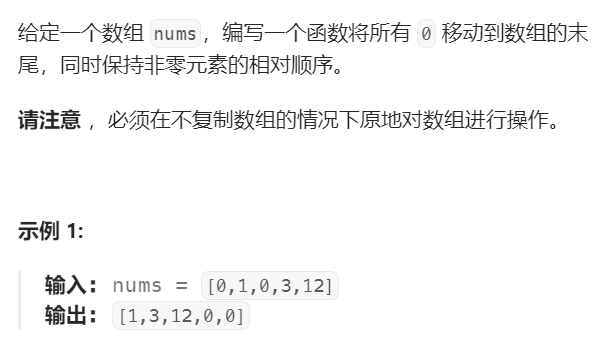
思路历程:
看上去很简单,但其实还是要一点时间的,我觉得每次做题的时候真的不能犹豫,该用STL就用,别怕,大不了做出来了等面试官提额外要求,犹豫会浪费很多时间
解题思路:记录含0下标,vector进行erase(),注意这里的erase最好从最后开始,不然数组下标会变
answer:
class Solution {
public:
void moveZeroes(vector<int>& nums) {
int n =nums.size();
if(n==1)return;
int i=0;
vector<int>xb;
while(i<n){
if(nums[i]==0){
xb.push_back(i);
}
i++;
}
int c=xb.size();
while(c--){
nums.erase(nums.begin()+xb[c]);
nums.push_back(0);
}
}
};
题解思路:右指针从开头向后遍历,遇到非零的就放在开头(与开头的左指针替换)左指针右移
左指针的左边就是已经完成的序列
ID:20
居然又刷到了简单题
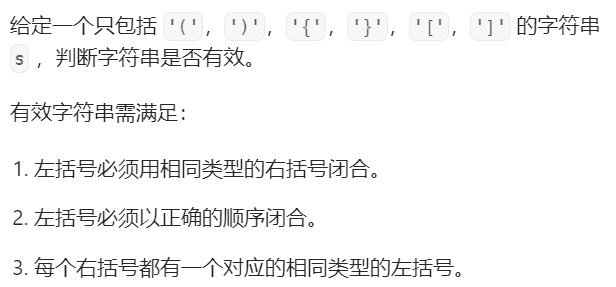
虽然简单,用栈就能解决,但也花了一点时间
主要是逻辑运算没搞好
注意||两边要带括号
answer:
class Solution {
public:
bool isValid(string s) {
stack<char> stk;
int i = 1;
int n = s.size();
if (n == 1)
return false;
stk.push(s[0]);
while (i < n) {
if (!stk.empty()) {
char tmp = stk.top();
if (tmp == '(' && s[i] == ')'){
stk.pop();i++;continue;
}
if (tmp == '[' && s[i] == ']'){
stk.pop();i++;continue;
}
if (tmp == '{' && s[i] == '}'){
stk.pop();i++;continue;
}
stk.push(s[i]);
} else {
stk.push(s[i]);
}
i++;
}
if (stk.empty()) {
return true;
} else{
return false;
}
}
};
题解里有一个很牛的思路
class Solution {
public boolean isValid(String s) {
int length = s.length() / 2;
for (int i = 0; i < length; i++) {
s = s.replace("()", "").replace("{}", "").replace("[]", "");
}
return s.length() == 0;
}
}
很厉害,一开始想有点难想到
ID:23

虽然30minAC了,但是运行时间好长,近600ms
其他人只要20ms吗。。。
思路历程:
所有的list转成队列,然后取对头最小元素插入链表
answer:
/**
* Definition for singly-linked list.
* struct ListNode {
* int val;
* ListNode *next;
* ListNode() : val(0), next(nullptr) {}
* ListNode(int x) : val(x), next(nullptr) {}
* ListNode(int x, ListNode *next) : val(x), next(next) {}
* };
*/
class Solution {
public:
ListNode* mergeKLists(vector<ListNode*>& lists) {
int n=lists.size();
int nul=0;
for(auto c:lists){
if(c==nullptr){
nul++;
}
}
if(n==nul)return{};
vector<queue<int>> all;
ListNode* res=new ListNode();
ListNode* head=res;
int count=0;
for(auto c:lists){
queue<int> tmp;
while(c){
count++;
tmp.push(c->val);
c=c->next;
}
all.push_back(tmp);
}
while(count--){
int minhead=10000;
int idx;
for(int i=0;i<n;i++){
if(!all[i].empty()&&minhead>all[i].front()){
minhead=all[i].front();
idx=i;
}
}
ListNode* node=new ListNode();
if(count==0)node=nullptr;
res->val=minhead;
res->next=node;
res=node;
all[idx].pop();
}
return head;
}
};
看看他们的优化答案:最小堆(优先队列)
ID:56
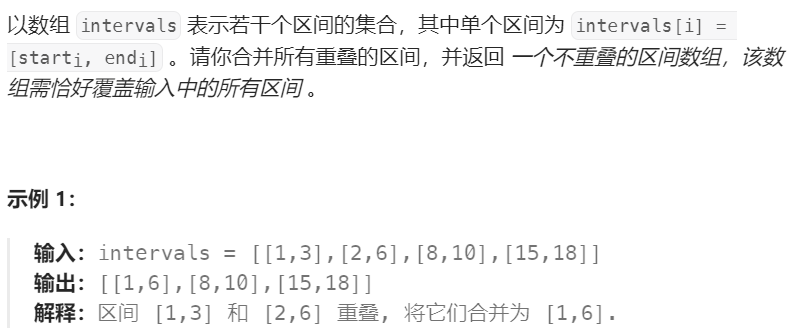
唉,一路跟着没过用例改的...
思路历程:
一开始已经想到了,要先排序,但当时想的是,应该要根据平均值排序,但后来发现有的样例过不了,因为有些区间比较大,比如[8,9]和[1,10]这[1,10]肯定要放后面
所以后来改成了根据区间的右边界排,反正左边界可以处理
然后在删除区间的过程中,记得从后往前删
同时记得判断是否要改变左边界([1,4],[0,10])
answer:
class Solution {
public:
vector<vector<int>> merge(vector<vector<int>>& intervals) {
int n=intervals.size();
int i=0;
sort(intervals.begin(),intervals.end(),[](vector<int>&a,vector<int>&b){
return a[1]<b[1];
});
i=n-1;
while(i>0){
if(intervals[i][0]<=intervals[i-1][1]){
if(intervals[i][0]>intervals[i-1][0]){
intervals[i][0]=intervals[i-1][0];
}
intervals.erase(intervals.begin()+i-1);
}
i--;
}
return intervals;
}
};
ID:32
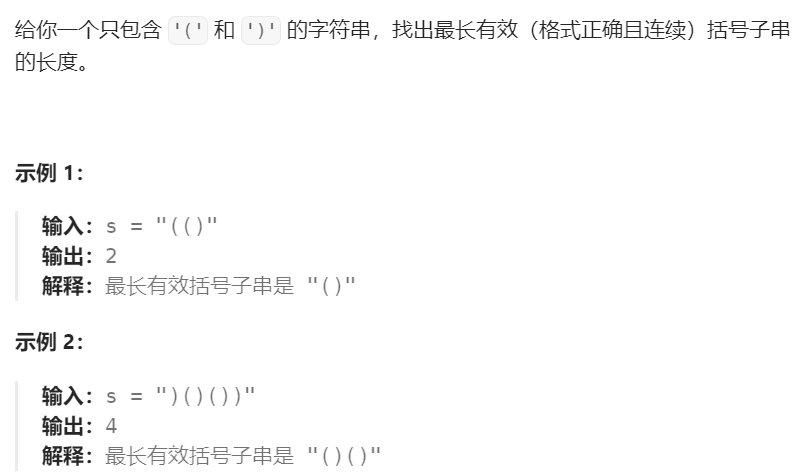
思路历程:
一开始以为很简单,就是用栈,直到遇到了这个样例
"()(()"
...很尴尬,因为中间的(成了一个隔板,不知道该怎么处理
这个我可以在入栈时判断是否为空,空的话,把结果暂时存起来
但下面这个样例真过不了了...
"(()(((()"
看了题解....居然是dp...
...题解二是栈,我陷入了思维误区,只想着把括号放进去,其实可以把下标放进去,这样每次
可以记录最大状态
核心思路如下:
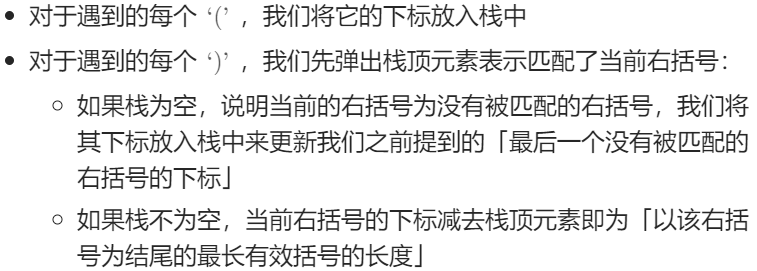
class Solution {
public:
int longestValidParentheses(string s) {
int maxans = 0;
stack<int> stk;
stk.push(-1);
for (int i = 0; i < s.length(); i++) {
if (s[i] == '(') {
stk.push(i);
} else {
stk.pop();
if (stk.empty()) {
stk.push(i);
} else {
maxans = max(maxans, i - stk.top());
}
}
}
return maxans;
}
};
这里的栈底元素-1就是为了计算最深深度
如果出现了我上面说的隔板,就把-1弹出来,把隔板下标放进去
已经放假了,2天没刷题了,寒假好好学,好好刷题,好好准备
ID:141
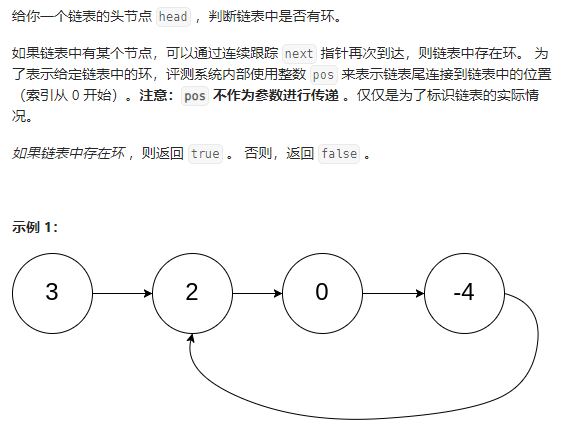
思路历程:
我就是很简单的暴力,用一个map存好节点,如果遇到之前的节点说明有环
answer:
class Solution {
public:
bool hasCycle(ListNode *head) {
map<ListNode*, int>node_map;
ListNode* tmp=head;
while(tmp){
if(node_map.find(tmp)!=node_map.end()){
return true;
}else{
node_map[tmp]=1;
}
tmp=tmp->next;
}
return false;
}
};
看到一种题解,快慢指针,确实也很不错,快指针遇到null就false
如果有环的话,可以这样理解,一快一慢进入环形跑道,然后快的终将会追上慢的(套圈)
answer:
class Solution {
public:
bool hasCycle(ListNode *head) {
if(!head||!head->next)return false;
ListNode* slow=head;
ListNode* fast=head->next;
while(slow!=fast){
if(!fast||!fast->next)return false;
slow=slow->next;
fast=fast->next->next;
}
return true;
}
};
ID:11
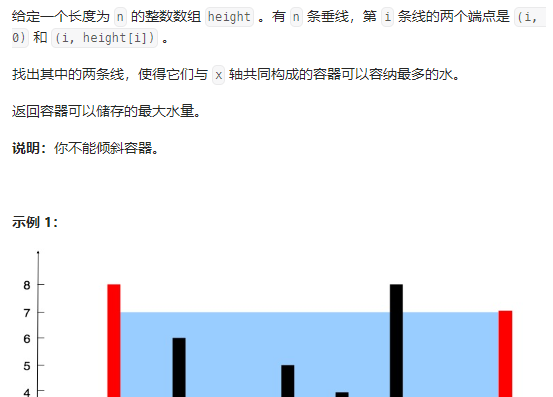
思路历程:
和之前的那个最大矩形有点像,单调栈和哨兵机制
哈哈哈哈
居然卡着时间线过了,笑死我了,看着示例绕过了一些恶心数据
这次其实也可以用栈的机制,找到最远的稍大值,(没有就比较当前值和加长矩形)
answer:
class Solution {
public:
int maxArea(vector<int>& height) {
//找一个最远的比自己大的作为边界
int n=height.size();
int i=0;
int sub_res=0;
while(i<n){
if(!height[i]||sub_res/height[i]>(n-i)){
i++;continue;
}
for(int j=i;j<n;j++){
if(height[j]>height[i]){
sub_res=max(sub_res,(j-i)*height[i]);
}else{
sub_res=max(sub_res,(j-i)*height[j]);
}
}
i++;
}
return sub_res;
}
};
看看题解
使用双指针进行操作,两边同时向中间靠拢
ID:98
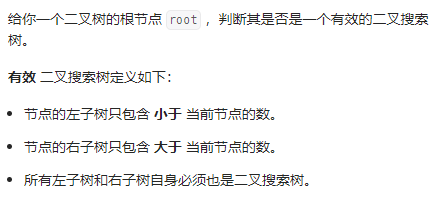
一道正常的DFS,但是只顾着判断当前子树的正确性,忘记判断整体二叉搜素树的正确性了,在函数封装时,得带上一个最小根值和最大根植才行,这样一层层遍历下去才能判断整体是否正确
另外,在判断值大小的时候,可以同时直接判断有无值,所以只需要一次判断
answer:
class Solution {
public:
bool helper(TreeNode* root, long long lower, long long upper) {
if (root == nullptr) {
return true;
}
if (root -> val <= lower || root -> val >= upper) {
return false;
}
return helper(root -> left, lower, root -> val) && helper(root -> right, root -> val, upper);
}
bool isValidBST(TreeNode* root) {
return helper(root, LONG_MIN, LONG_MAX);
}
};
 微信
微信
 支付宝
支付宝
